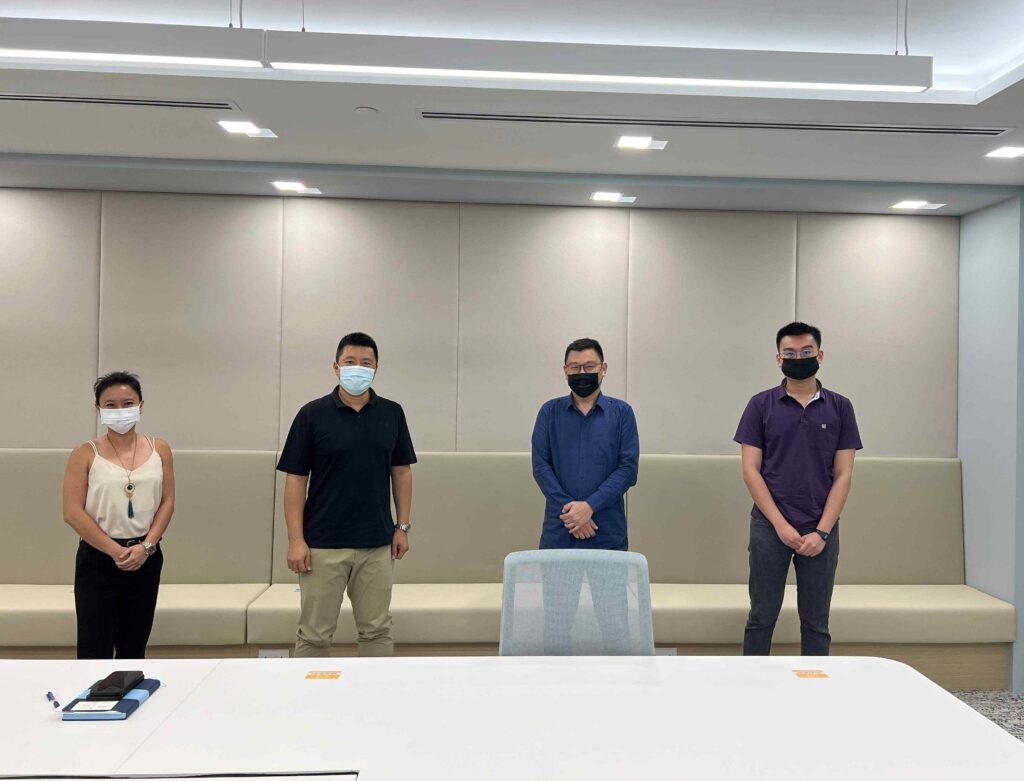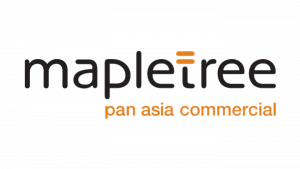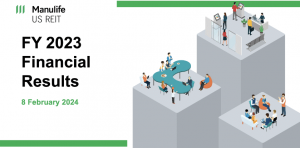On the 26th October 2021, I had the opportunity to speak to Mr Adrian Chui, CEO and Executive Director of ESR REIT. As you may have known, the recent announcement of ESR REIT’s proposed Merger with ARA LOGOS Logistics Trust has sparked many questions amongst investors.
Proposed merger of ESR REIT with ARA LOGOS Logistics Trust: Resources
- Proposed merger with ARA LOGOS Logistics Trust Presentation Slides – ESR REIT
- Proposed merger with ESR REIT Presentation Slides – ARA LOGOS Logistics Trust
- MoneyFM 89.3 Radio Interview covering the REIT mergers
- Frequently Asked Questions – Proposed Merger Of ESR-REIT And ARA LOGOS Logistics Trust By Way Of A Trust Scheme Of Arrangement
During my visit to ESR Bizpark @ Changi, on behalf of investors, in an interview with Mr Adrian Chui and Ms Charlane-Jayne Chang (Head of Capital Markets and Investor Relations), I asked several questions regarding the proposed merger with ARA LOGOS Logistics Trust, ESR-LOGOS REIT’s future strategy, and what to expect moving forward.

Kenny: Is the ESR REIT – ARA LOGOS Logistics Trust merger dependent on ESR’s successful acquisition of ARA Asset Management?
Adrian: Yes the merger is conditional on that. If ESR’s acquisition of ARA Asset Management (including LOGOS) does not go through, the REIT merger will not go through. Before the announcement of ESR’s acquisition of ARA Asset Management, both parties (ESR Cayman and LOGOS) have their own property pipelines from our respective Sponsors. The REIT merger will also remove conflicts of interest when ESR acquires ARA Asset Management as the enlarged ESR-LOGOS REIT will trade as 1 enlarged REIT with access to enlarged ESR Cayman’s pipeline of assets and tenant base.
Kenny: The new banking facilities have a lower weighted average “all-in” finance cost of 2.25% per annum. Have you considered ‘green bonds’, that have an even lower finance cost?
Adrian: Yes – we are keen to look at green bonds and/or sustainable loans as we embark on our ESG offerings as an enlarged ESR-LOGOS REIT. Post-merger we will review our ESG offerings, plan and then roll out our ESG offerings. It is necessary to align both REIT’s ESG plans, before embarking on further green initiatives. Green loans and/or bonds will be part of our capital structure going forward.
Kenny: After the ARA LOGOS Logistics Trust merger, what will be ESR-LOGOS REIT’s strategy moving forward, in terms of property pipeline? The current portfolio of properties is Singapore and Australia centric.
Adrian: We will look to follow the footprint of our Sponsor, ESR Cayman. They have properties in Singapore, China, Japan, Australia, India and Korea. Freehold and/or longer land lease assets will be the focus of our growth strategy in order to address the short underlying land lease of Singapore industrial properties. As such, overseas expansion will pick up with Australia, Japan and possibly China as the key overseas markets. These are countries where ESR Cayman has a long established footprint and full real estate value chain with Australia & Japan being developed countries. As REITs should primarily consist of stabilised assets, the properties have to be in countries where there is rule of law, and money can flow in and out easily. Our Sponsor’s assets in Japan are also relatively new and freehold.
Kenny: Also Japan’s cost of debt is very low. For example ParkwayLife REIT at ~0.6% average cost of debt.
“Overall, we are quite excited for the future. Wherever we invest is going to be in the jurisdiction in which ESR Group has a presence in.”
Kenny: I also see that ESR Group have a share in Cromwell. Does this mean anything?
Adrian: Nope. Different jurisdictions. Our focus will be on APAC.
Kenny: Judging by your responses, despite ESR being a major shareholder in Sabana REIT and also AIMS APAC REIT, I don’t think you’ll be interested in acquiring these two REITS already.
Adrian: In terms of acquiring properties, we would be focusing on our Sponsor’s pipeline of assets. For example, Sponsor has some assets in Japan which we can easily acquire.
Also, as a REIT CEO, when we look at every investment, we look at how it will benefit the REIT. A fundamental issue for ESR-REIT now is that most of our assets are in Singapore, where land leases are short, which means that our yield is relatively higher at about 6% as an equity risk premium is required for short land leasehold assets compared to freehold. As our Sponsor’s asset pipeline consists of freehold and longer land lease assets, this is more valuable to us. Post-merger, with a larger asset base, lower cost and wider access to funding, we can do more and faster.
Kenny: Because your NAV will drop over the years.
Adrian: Exactly. If Singapore industrial assets are also freehold, our yield will be lower than 6%. Now that the REIT will be bigger (S$5.4b total assets), we are in NAREIT Global Index, and we have visible and executable pipeline of assets from our Sponsor with longer land leases, that should be the direction moving forward, acquiring properties with longer land leases, so that the NAV won’t constantly keep dropping. Previously, when our total asset size was smaller, buying a portfolio of properties (such as Sabana REIT acquisition) to help us get into NAREIT would be quite sensible. Now we are already a NAREIT-indexed REIT.
In terms of growing, every year since we became ESR REIT, we generally acquire assets, at about 15-20% of our then portfolio size. This excludes merger years which are one-off.
“Our philoshophy is that whenever you want to perform an acquisition, you must be able to digest (and manage it).”
Kenny: Last question: Do you personally have a target on how big your market cap should be, or Sponsor tells you to meet this target? For strategic reasons.
Adrian: The answer from the Sponsor is always ‘as big as sensibly possible’. For me, I look at a practical point of view on what I believe the market can accept in terms of size and risk. We also take into account other factors such as resources (you need people to do the work and due diligence properly). Post-merger, with a larger asset base, lower costs of funding, wider access to capital and looking at my Sponsor’s asset pipeline, $800m to $1 billion per annum of acquisitions in the next 3 years is plausible.
Charlene: I think importantly, with our track record we have been very disciplined with the way acquisitions are done, it has been done in a properly staged and “digestible” size which are value-accretive to unitholders.
Adrian: We are quite aware that once you make one wrong move, that’s it. Our philoshophy is that when you want to acquire, you must be able to digest (and manage it). One recent example would be the recent acquisitions of 46 Tanjong Penjuru and 10% investment in ESR Logistics Partnership (“EALP”) which is accompanied by a manageable c.S$149.6mil Equity Fund Raising exercise (consisting of a c.$100mil Placement Tranche and c.$50m Pref Offer tranche for our existing unitholders) which was 3.6 times subscribed (Editors note: Read more about it here). We cannot just ‘gobble’ up on assets for growth sake without considering execution and funding risk. We want to make sure our team is able to manage the assets that we acquire also, making sure it is within our comfort zone and risk appetite.

Kenny Loh is a Senior Financial Advisory Manager and REITs Specialist of Singapore’s top Independent Financial Advisor. He helps clients construct diversified portfolios consisting of different asset classes from REITs, Equities, Bonds, ETFs, Unit Trusts, Private Equity, Alternative Investments, Digital Assets and Fixed Maturity Funds to achieve an optimal risk adjusted return. Kenny is also a CERTIFIED FINANCIAL PLANNER, SGX Academy REIT Trainer, Certified IBF Trainer of Associate REIT Investment Advisor (ARIA) and also invited speaker of REITs Symposium and Invest Fair. You can join my Telegram channel #REITirement – SREIT Singapore REIT Market Update and Retirement related news. https://t.me/REITirement



